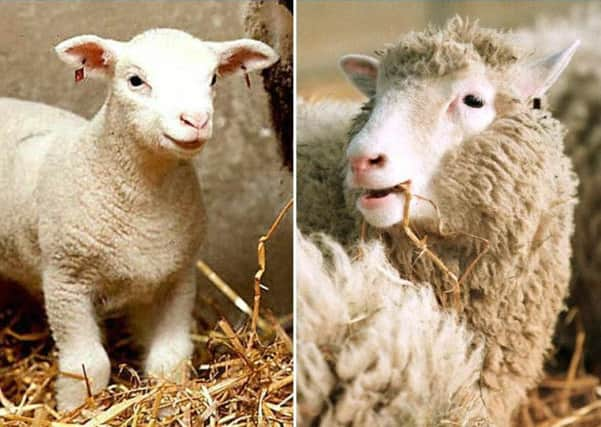Generous visitors '˜nearly made Dolly the Sheep quite fat'


The female domestic sheep, named after country singer Dolly Parton, became famous around the globe on 5 July, 1996 after she became the first mammal to be cloned from an adult cell.
Tim King, one of the vets who cared for Dolly at the Roslin Institute in Midlothian which is now part of the University of Edinburgh, said she behaved more like a dog, however.
Advertisement
Hide AdAdvertisement
Hide AdHe said: “Dolly was more like a dog than a sheep in many ways. She would come when you called her name, mostly because she knew there might be a treat involved. We had to put her on a diet at one point as she had so many visitors, she was becoming quite fat.”
Mr King shared his memories of Dolly as part of celebrations to mark the anniversary of her birth 20 years ago today .
Members of the public including scientists involved in Dolly’s creation are now being asked to share their reflections on the world’s most famous sheep.
The project aims to record people’s ongoing hopes for what the research might achieve as well as their personal memories of Dolly.
Professor Sir Ian Wilmut, who led the team that created Dolly, said: “When Dolly was born we knew that we had achieved something extraordinary.
“But I don’t think any of us would have predicted the level of public interest in our research, or that people would still be enthralled by Dolly and her legacy 20 years later.”
Bill Ritchie, an embryologist on the Dolly project, revealed they knew the exercise had been a success when they saw Dolly’s white face.
He said: “When Dolly was born we were excited to see that she had a white face because that meant that the experiment had worked.
Advertisement
Hide AdAdvertisement
Hide Ad“She was cloned from a Finn Dorset which has a white face but both the egg and surrogate mother were Scottish Black-face ewes.”
Dolly’s birth turned scientific thinking at the time on its head. She proved that cells from anywhere in the body could be made to behave like a newly fertilised egg – something that scientists previously thought was impossible.